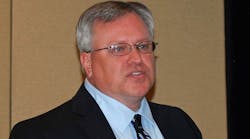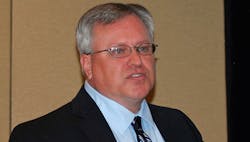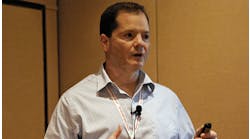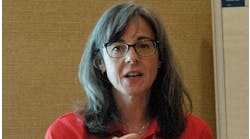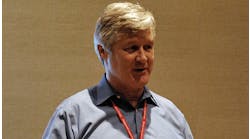Extensive planning key to control room re-siting at LyondellBasell
“We took a busful of people to three different furniture manufacturers.” LyondellBasell’s Jeff Varner explained the intricate steps it took relocate is control rooms, migrate its control systems and implement ARO at its Channelview, Texas, campus.
In 2013, LyondellBasell began a facility siting project while it migrated its control room and added augmented remote operations (ARO) to build a new campus away from its process units in Channelview, Texas.
The central-control-room migration and ARO were designed to improve engineering support for operations, explained Jeff Varner, control systems technologist at Equistar Chemicals, a subsidiary of LyondellBasell.
“We spent five to six years developing new drawings,” said Varner, who spoke at this week’s Honeywell Users Group (HUG) Americas conference in Orlando, Florida. “The initial focus was to determine new building-space requirements. Walkthroughs were conducted to document space usage, and equipment inventories were conducted and documented.”
Extensive planning and attention to detail were among the key reasons for successful completion of the project, explained Varner. Other critical factors included having the right resources available; proper labeling of cables and devices; maintaining complete, accurate equipment inventories, network drawings, server rack layouts and network switch port assignments; keeping equipment spares; and avoiding the temptation to rush.
After the project was split between a building-construction team and a DCS-migration team, LyondellBasell hired five companies, including Contech Control Services for the engineering, design and construction, and Honeywell Process Solutions for the DCS upgrades and network migrations, to help shoulder the load on the overwhelming project.
The state of the Honeywell Experion Process Knowledge Systems (PKS), as well as a mix of TDC3000 networking systems, were assessed before the groups discussed the facility siting and new control-room plans.
The initial intent was to remove as many people as possible from the process units, explained Varner. “We used remote networks to put DCS thin clients on the network, providing Experion Flex Station access,” he said. “We created firewalls and a DMZ for the switches.”
The new control-room configuration includes four semi-circles, or pods, housed with server rack rooms, so fiber cable can run from any unit to another.
The operator consoles were critical, so a team including operations was formed for the evaluations. “We took a busfull of people to three different furniture manufacturers—ABB, Evosite and Evans,” explained Varner. “Evaluation forms were used to rank the furniture, and Evans was selected.”
The new operator console contains 15 monitors, including two 55-inch ones. There are three DCS stations and an IT station in the middle on the bottom. Two audio speakers create a sound shower for each operator, and plant radios are incorporated into those speakers.
Validate, then double-check once more
The network-infrastructure migration reconfigured everything so there’s distribution to four different buildings. “We spent a tremendous amount of time to make sure we didn’t have any outages during the transition,” explained Varner. “We validated as-is network drawings, developed to-be network drawings, walked down the networks, validated switch configurations, pre-ran and labeled new network patch cables, developed detailed transition plans and implemented one change at a time to minimize the possibility of creating bigger problems.”
The east plant migration was approached with extensive care and preparation. “The hardware refresh and upgrade were completed between Thanksgiving and Christmas of 2018 because there was pressure to get the operators in the new control room," explained Varner. “Operator thin clients in the old control room with remote desktop protocol (RDP) aided the migration to new stations.”
Finally, Experion Augmented Remote Operations (ARO), which had been developed as a result of COVID restrictions, were implemented. “Operators may be very close to one another,” explained Varner. “With concerns about a COVID breakout, ARO allows operation and socially distancing. ARO allows you to use a new server as a replacement of the remote engineering stations server and gives Flex Station access to the DCS.”
Prior to the new control room, engineers and specialists used offices in the control rooms, and they spoke face-to-face with board operators; operators could directly display DCS screens to engineers and specialists.
Following the migration, engineer and specialist offices are in the administration building. COVID changed communication with board operators to phone, radio and live-meeting, instead of face-to-face. “Our first use case for ARO was at a joint venture we have in China, because the engineering support was located out of France,” explained Varner. “After that, we decided we wanted to extend the DCS view to reduce time to identify and resolve process issues.”
The editors of Control, Control Design and Smart Industry are reporting live from 2022 Honeywell Users Group in Orlando, Florida, to bring you the latest news and insights from the event. When the event comes to a close, the best, most important coverage will be compiled into a report by the editors.
Register now to pre-order the report and be among the first to receive it in your inbox.
